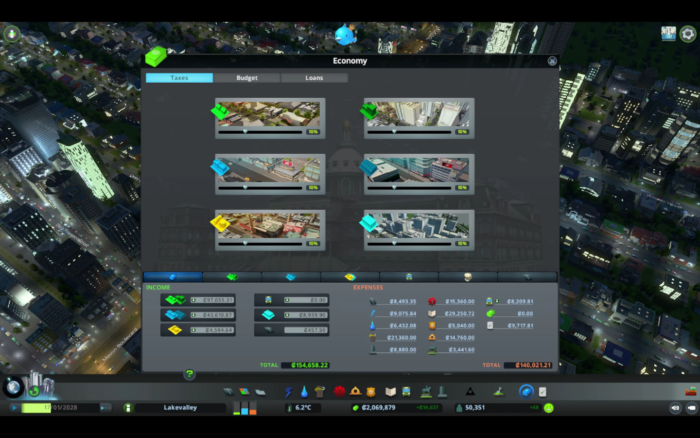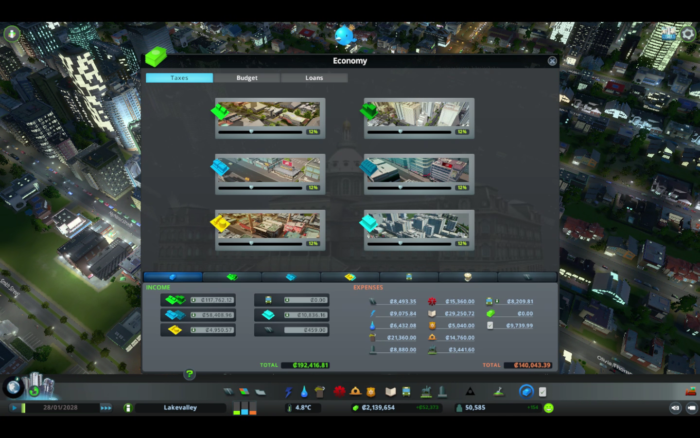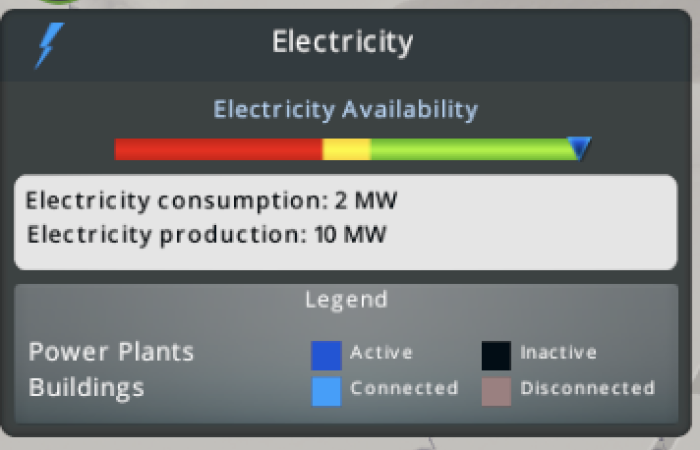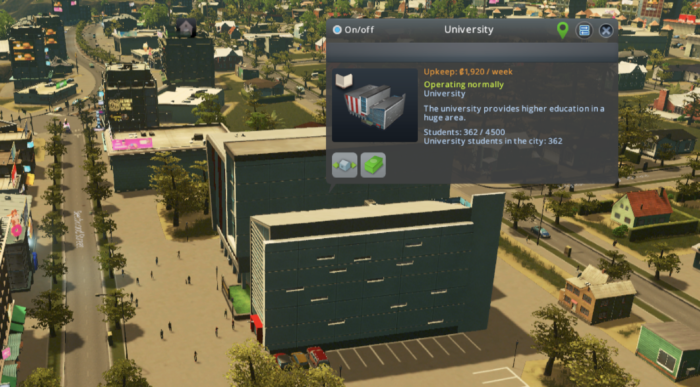If you have debts in Cities Skylines, there are quick tips to get out of them. This guide is designed to help you solve your money problems quickly. The first thing you need to do is get more money in your budget. You should do this when you raise taxes. If raising taxes doesn’t work welly then you need to cut spending on services.
- raise taxes to 10 – 13%, maximum depends on level of building
- temporary you should have maximum taxes
- cut down services non-essential services
- cut down expensive services
- shut down expensive buildings
Raising taxes effectively
If you are in debt, first of all you need to raise taxes. Temporarily, you could have taxes of no more than 29%, but that will lead to problems and to the dissatisfaction of citizens who will complain that they have to pay high taxes.

This should lead to a “death-spiral” as disgruntled citizens move out of your city. Because of that, you will have fewer people paying taxes and your revenue will drop. So taxes at 29% are only a temporary solution…

… taxes need to be kept at an “optimal” level. Once the “high taxes” icon starts appearing over the houses, you can track it, so need to start slowly lowering taxes until the icon disappears. High taxes can cause a building to be abandoned.
Taxes must be between 9% and 13% The optimal level of taxation is between 9% or 13% depending on the density or level of buildings. Small cities in the early phases can have taxes at 13% and as your districts grow, taxes need to be reduced.Reducing costs of your services
If you have a small town, you should reduce your spending on the services you have. You can use the budget sliders and set expenses at 50%, which will mean that your services will run at 20% efficiency. It is safe to reduce road maintenance to 50% at first.
Then you can reduce electricity or water expenses, which are the biggest. However, there you have to be careful to avoid interruptions in the electricity/water supply and sewage disposal. If all services are working well, you should see the “bar” with the arrow on the green side (as in the picture below)…

… if the arrow is in the green part of the column, everything works fine. So I often do this by setting myself to be on the border of yellow and green, and gradually increasing the slider as I build more and more houses. That way I can save a little money.
If this budgeted costs don’t help, you can reduce all of your services to 50% to stabilize your income.
If it helps, then you should add some budget for core services like schools, firefighters, hospitals at 70% – 75%. In the chart below you should see the efficiency of services and you could see that every 1% minus 100 has a significant impact on the quality of services….

… so it’s better to use 75% if you need to save money and don’t want the city to collapse.
Disable the building that maintains most of your money
If that doesn’t help, you should use probably the worst action, which is to blow up the service buildings. When you should click on the details of these buildings and set them to off. For example, with the University in the following image I pay “maintenance 1920$ / week”…

Once the building is on hold, the building does not need electricity/water, so you don’t have to pay for it. But you also don’t have the benefits that buildings have. It makes sense to turn off everything you have in the town 2 times like that and you will see that it will cost you a lot of money.
Tips to solve problems in Cities Skylines
Hardest problems guides not enough customers and not enough goods to sell
Complicated problems could be also with overeducated workers which cause abandoned buildings
How to make money in Cities Skylines and how to get out of debt quickly
Tips to increasing population and understanding how increase residential demand
What is land value and why you need to focus to get happy citizens
To play on bigger map you need unlock more tiles and inside I show how to use full maps
Also you should have problems with power outages and with traffic with which we could also help